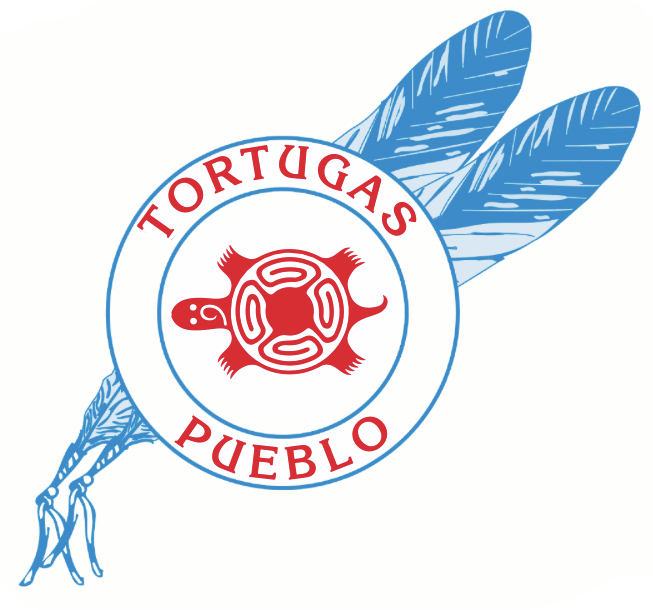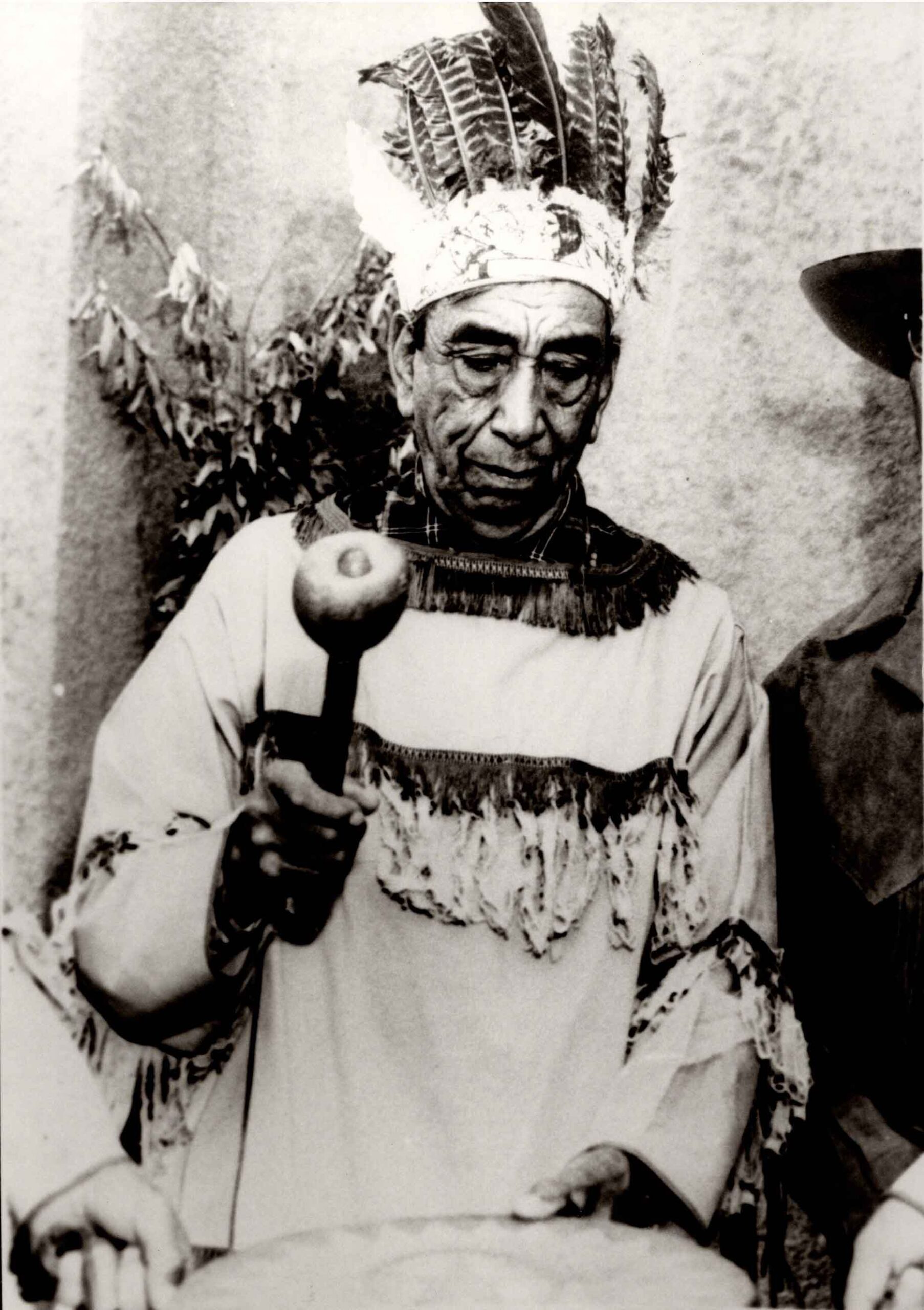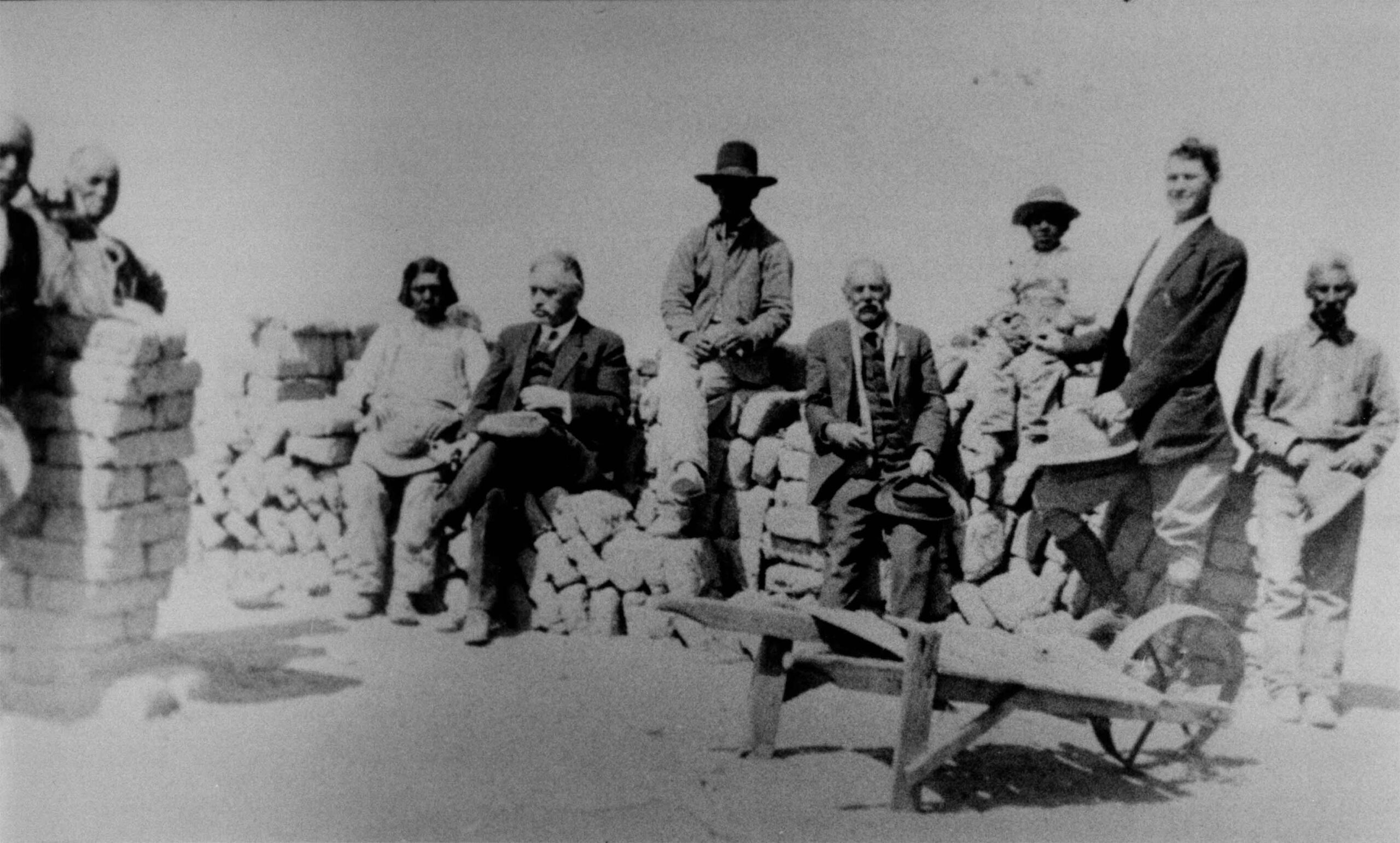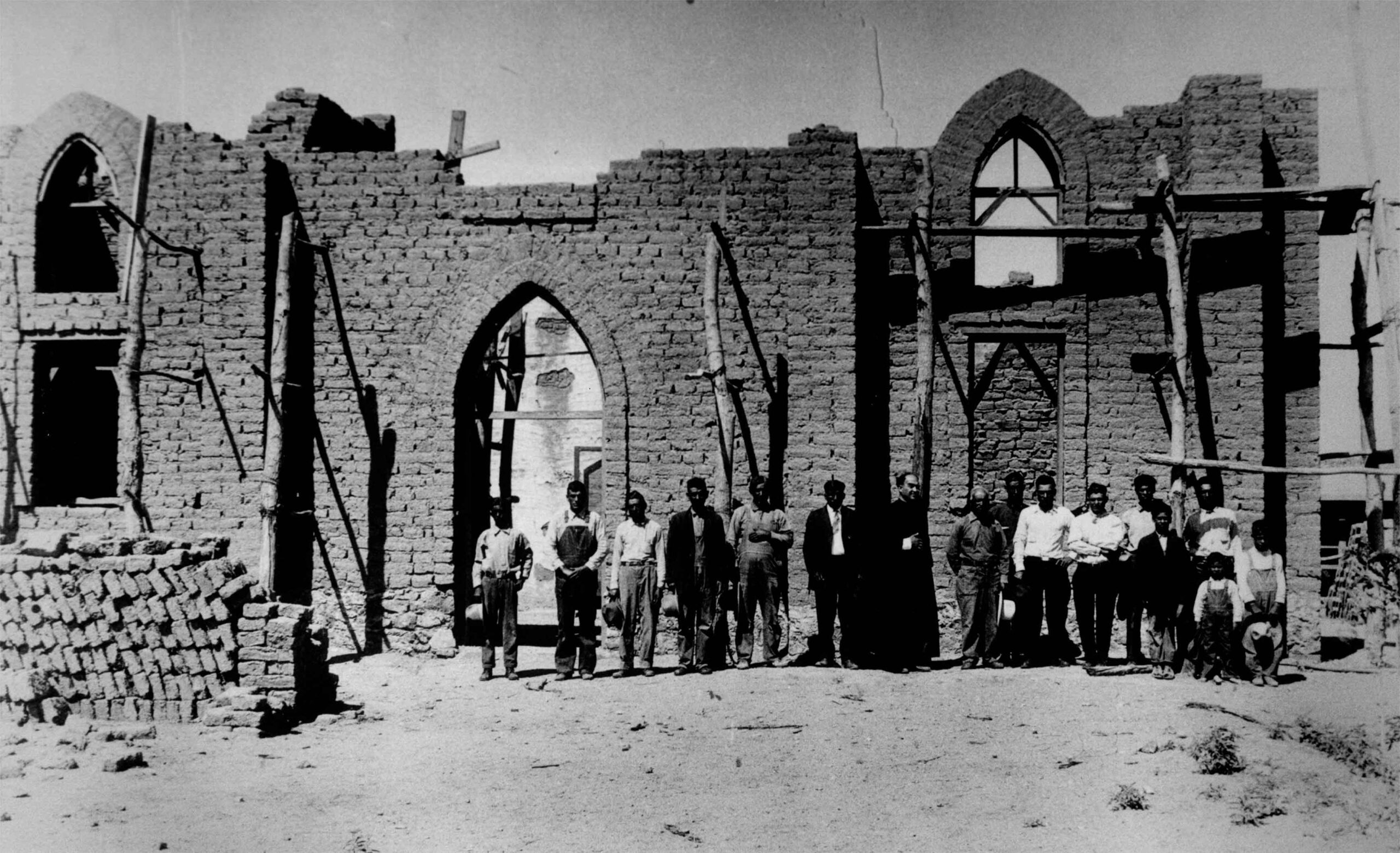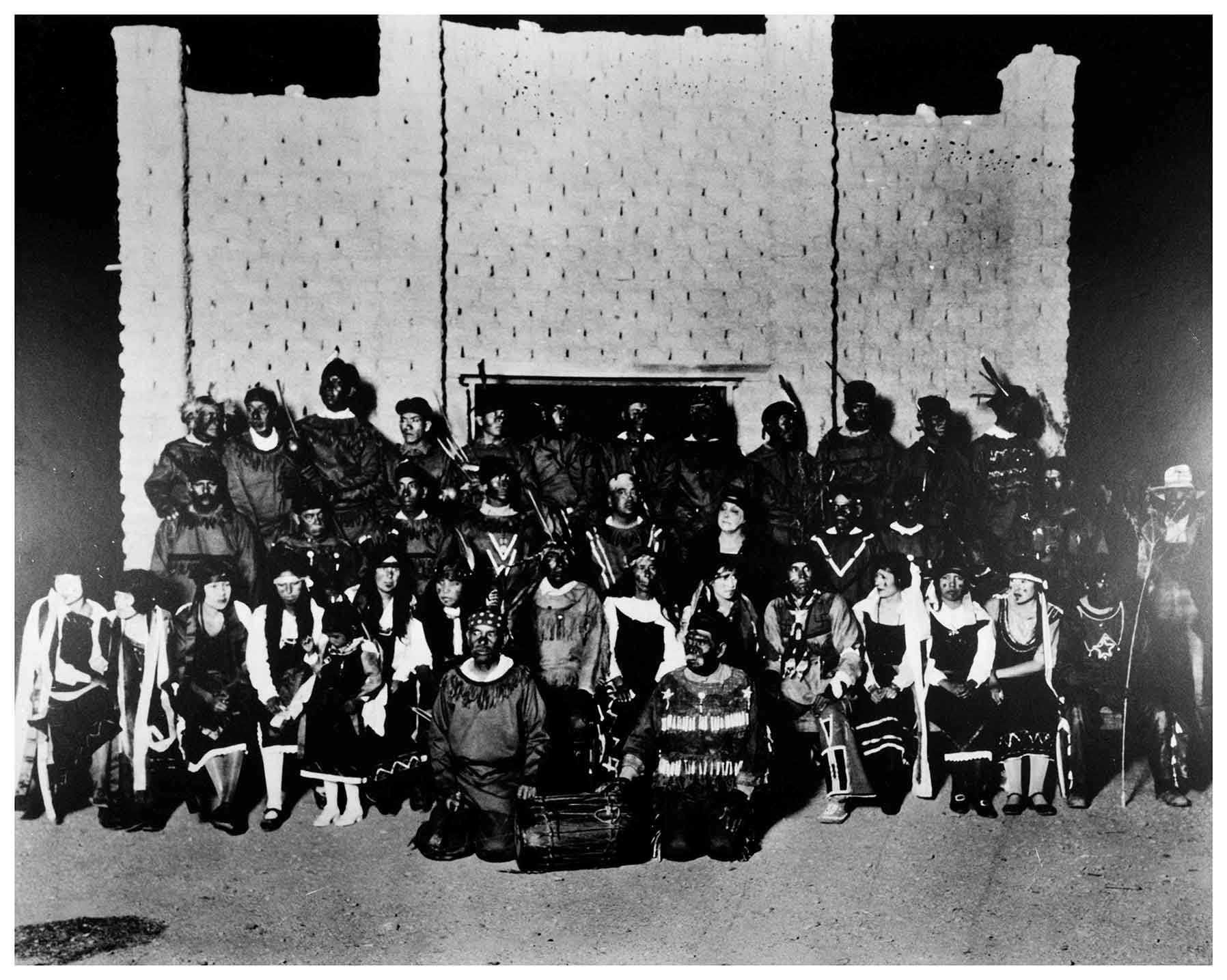Historical events of Tortugas Pueblo
EUGENE VAN PATTEN WITH MANUEL ORTEGA and TIGUAS. Eugene Van Patten married a Tigua from Ysleta del Sur. Shortly after they moved to Las Cruces, she passed away, but Van Patten remained committed to the Indians. He secured the townsite of Tortugas for them and handled the incorporation of the Indians into La Corporacion de Los Indigent de Nuestra Senora de Guadalupe so that they could receive the grant of land. Photo courtesy of Rio Grande Historical Collections, NMSU.
FRANCISCA ROYBAL Francisca Avalos married Felipe Roybal, the cacique of the Tiguas. When Felipe Roybal was murdered in 1908, Francisca “Pancha” Roybal succeeded him as regenta caciqua. holding that position until her death in 1924, when her eldest son, Vicente, succeeded her.
Photo courtesy of Rio Grande Historical Collections, NMSU
VICENTE ROYBAL (c. 1968). Vicente Roybal, shown here with the tombe (drum), was the eldest son of Felipe and Francisca Roybal, served as cacique in the pueblo from 1924 when his mother died, until his death in 1978. He was succeeded by Ernesto Dominguez. Photo courtesy of Emma Narvaez
Delfina Cruz and Cirildo Avalos at Tortugas, 1924. Courtesy Rio Grande Historical Collections, NMSU.
LOS INDIOS AT THE ROYBAL HOME (c. 1905). Before the Corporation and town site were established at this location, many Indian families lived in Las Cruces. Some still retain their homes there. During the fiesta, they would dance at the home of the cacique or religious leader, Felipe Roybal, and the abuelos leave from there for the “A” mountain pilgrimage. Photo courtesy of Fred Salas.
Matachines Dancing in Front of St. Genevieve Church. Dec. 12, 1903.
Courtesy Rio Grande Historical Collections. New Mexico State University.
HISTORIC MATACHINES
The large photo depicts a scene of the Matachines, also referred to as Danzantes dancing “La Trensa” or the “The Braid.” It is a Maypole dance of European origin, which in northern New Mexico is only danced at Taos. Like all Maypole dances, it is anciently associated with sacred trees, fertility and the coming of spring. The photo was taken in 1916 behind the Roybal house which was located in Las Cruces at 343 East Amador Avenue. The Tiguas in the Mesilla Valley are descendants of Isleta Pueblo near Albuquerque, New Mexico, and the Roybals were their hereditary leaders. Individuals identified in this picture include Colonel Eugene Van Patten in the right background, with the white beard, and to his immediate right, his granddaughter, Emilia Ascarate. In a dark suit at the center of the dance group is Francisco Dominquez, father of Ernesto Dominquez, Josephine “Chepa” Salcedo, and Emma Dominqeuz Narvaez. Emma Dominquez Narvaez is the Malinche in the foreground, wearing a white dress. The violinist is Mr. Tome. The groups were founded by Mr. Dominquez; his son, Ernesto Dominquez later became Cacique.
WORK CREW FOR BUILDING THE CHAPEL (c. 1909).™, the scene shows how the construction of the first cross-shaped chapel planned by Domingo Herrera. This picture, from the left: Susano Herrera; Vivian Herrera; Faustino Pedraza;
Dr. Harry Jackson (first secretary of the Corporation); Domingo Herrera; Eugene Van Patten (first president of the Corporacion); a very young Pedro Pedraza; unidentified; Pedro Benavidez. Photo courtesy of Angelita Carabajal.
LOS INDIOS DANCE AT THE DURAN’S (c. 1924). Before they moved out to the Tortugas townsite, the Indios used to dance at the Roybal and Avalos houses as well as at old St. Genevieve’s. After incorporation, homes and the present church (background) were built at the Tortugas townsite, originally called Guadalupe. Los Indios danced at several homesites, including that of Cornelio Duran here.
INDIOS GROUP IN FRONT OF CASA DE PUEBLO (June 24, 1924) . 1-Pancho Gonzales; 2-Faustino Pedraza; 3-Rosaria Salvatierra; 4-Alanniz Alvarez; 5-unidentified; 6-Guadalupe Alvarez; 7-Caiv slaria Avalos; 8-Isabel Grijalva; 9-Angelita Pedraza; 10-Comelio Duran; 11-Delfina Cruz; 12-Francisca Roybal; 13-Francisco Padilla; 14, 15 unidentified; 16-Luisa Dominguez; 17-Pedro Pedraza; 18-unidentified; 19-Miguel Fierro; 20-Ramon Martinez; 21-Vicente Roybal; 22-Peclrd ‘ *uz; 23-Victor Roybal; 24-Emilia Ascarate; 25-unidentified; 26-Lorenzo Alvarez; 27-Catarino Grijalva; 28-unidentified; 29-Eugenio Paz; 35- Antonio or Jose Maria
DRUM GROUP (December 1941). This picture demonstrates the continuing connection between the Tiguas of
Ysleta del Sur, Texas, and the community at Tortugas. From the left: Tomas Granillo (Ysleta del Sur), Sebastian Duran, unidentified, Chetto Granillo with drum (Ysleta del Sur|), Andres Granillo (Ysleta del Sur), Vicente Roybal, Faustino Pedraza.
PROCESSION GROUP (December 1941). Individuals identified-from the left: Pedro Pedraza, Jose Gonzales (hat in hand), Sostenes Gonzales (with drum), Francisco Duran (in suit, behind Sostenes), Vicente Roybal, Emilia Duran, Cruz Pedraza (behind first malinche), Donicio Parra (behind second and third malinches), Pino Moreno (back row, first danzant.e on left), Pedro Maese (back row center, bareheaded), Filomeno Carabajal (behind Pedro Maese).
